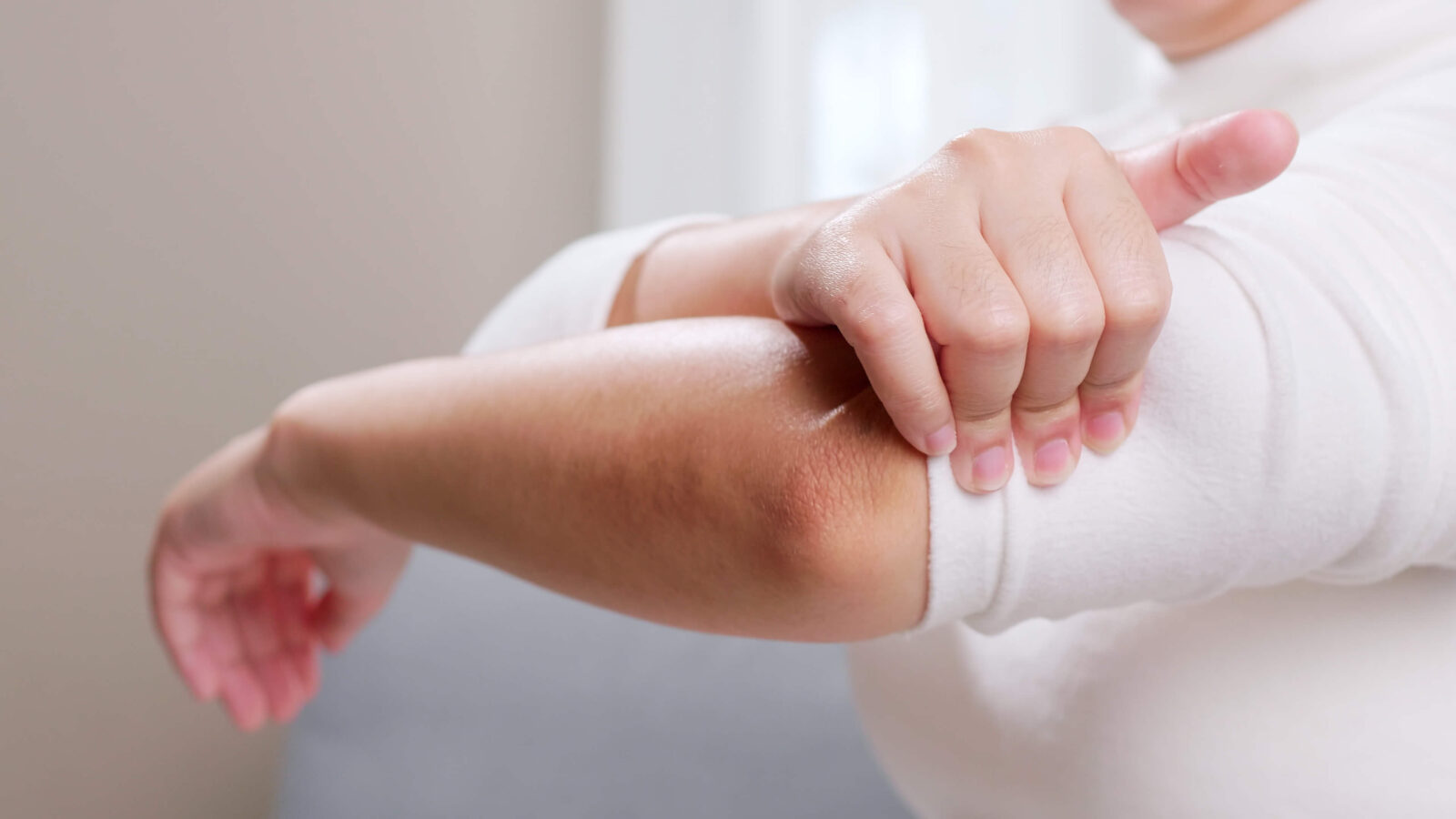
Medically reviewed by Misty Seidenburg
Pain in and around the elbow has several potential causes, and the location of your pain provides important clues about your condition and how to treat it. This article will focus on outer elbow pain, which can keep you from the activities you enjoy and the simple tasks that are part of your daily routine. Learn what causes outer elbow pain and strains and how they are treated with physical therapy.
Strains are a leading cause of elbow pain. A strain is an injury to a muscle or tendon, which is the fibrous tissue that connects muscle to bone. Also known as a “pulled muscle,” a strain develops when the tendon or muscle overstretches or tears through overuse or sudden trauma to the body.
Outer elbow pain and strains are more common in certain activities than others due to repetitive gripping, which can strain the tendons.
A sudden, unnatural movement, like twisting or turning the arm awkwardly, can cause an elbow strain. Moving too fast without warming up properly increases the risk of elbow trauma. In either case, the force of the impact or motion becomes too great for the tissue to withstand it.
Because tennis elbow, or lateral epicondylitis, is one of the most common causes of outer elbow pain, it’s worth a closer look. Tennis elbow is an overuse injury affecting 1-3 percent of adults in the U.S. Although it can occur from an acute injury, it often happens from repeated wrist extension. Poor form or a heavy racquet increases the risk of tennis elbow.
As pickleball overtakes other activities to become America’s fastest-growing sport, the term pickleball elbow has become synonymous with tennis elbow. Both sports can stress the same tendons and muscles, as players grip the paddle or racquet tightly and twist and turn their wrists repeatedly.
If you have an outer elbow strain without a complete rupture of the tendon, you may experience:
With a complete tear, elbow strain symptoms are usually more severe:
Elbow tendon tears are more likely in events involving considerable force, such as a contact sports injury, car accident, or fall on outstretched arms. Knowing the signs of a serious elbow injury is important to seek medical attention if needed and avoid further complications.
Elbow sprains and strains are often confused, but the two injuries involve different structures. An elbow sprain is a stretched or torn ligament, which are the tissues that connect bones to a joint. Twisting your arm, falling on it, or getting hit can cause a sprain. The symptoms of sprains and strains can be similar, and treatment for minor injuries often includes physical therapy.
Physical therapy for a pulled elbow muscle can help relieve outer elbow pain in several ways:
Physical therapists also prescribe home exercise programs (HEPs), which are exercises patients do at home in conjunction with an active physical therapy plan. Each HEP is carefully crafted to help the patient improve upon or maintain their functional movement goals. Studies show that patients who adhere to their HEPs increase their physical function and have improved outcomes overall.
The prognosis for an elbow strain with outer elbow pain varies depending on the extent of tissue damage. Mild strains generally improve within 6-10 weeks, while more severe injuries can take much longer. Some strains require surgical repair, followed by physical therapy. To get to the root of your nagging elbow pain, request an appointment online or find a physical therapy clinic near you.